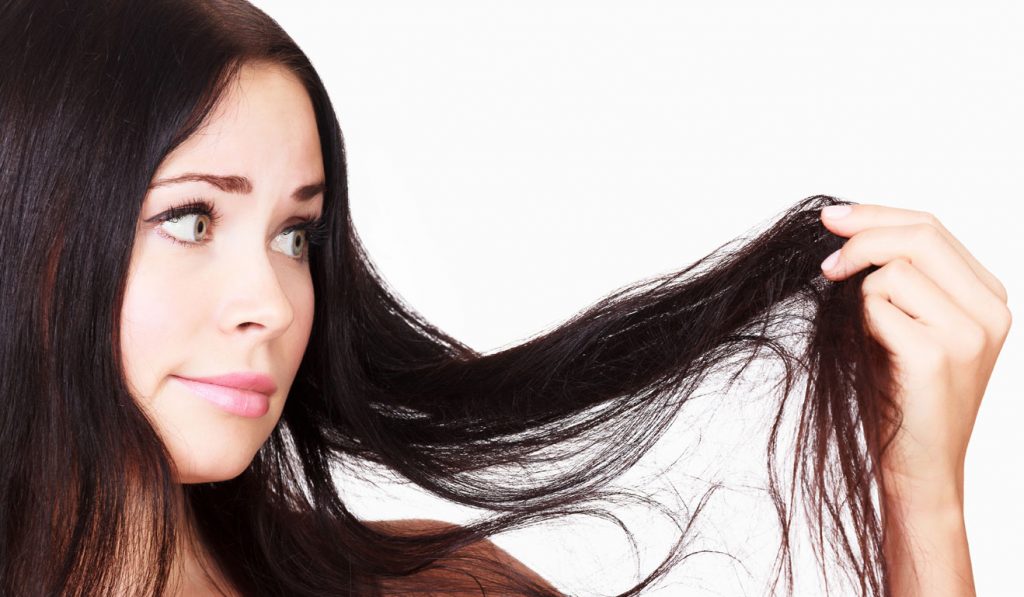All the information you need concerning your hair condition, you can obtain just by looking at the hair itself. The strands’ condition tells more than you could imagine. Find out for yourself and discover the secret of hair porosity!
To learn what your hair need, you can read many manuals.
Still, none of them will explain the porosity of hair, which is a key matter here. After all, on the porosity depends the nourishing ingredients choice in the products you apply on hair. The terms such as “damaged hair” or “fine hair” are inaccurate. Instead of reading yet another manual on nothing, meet the porosity of your hair.

What is the porosity?
Hair is made of the subdermal part and the part that grows out the dermis. In the skin are located hair follicles and hair bulbs, which require constant nourishment. The shaft is placed on the outside and is covered with hair cuticles. Although, you cannot see it, the hair is covered with the cuticles on its entire length. What is more, these cuticles can be more or less raised. Hair porosity is the level at which hair cuticles are raised towards the shaft. Healthy hair has closely adhering cuticles.
What types of porosity are out there?
In theory, hair cuticles can be raised the infinite ways. If you measure the raise in micrometres then there would be plenty of porosities. To simplify it are differentiated three basic hair types, which porosity is easy to determine.
Low porosity hair, i.e. in theory the healthiest. This hair is neither brittle and matte nor frizzing. Usually this hair is really dark and straight. It is characteristic for Asian women. This hair is smooth, because its cuticles are closed. However, this feature makes hair difficult to style. All ties and curls are almost impossible. This hair can be excessively weighted down, especially because it is very difficult to choose right cosmetics and treatments for this hair.
Medium porosity hair, i.e. characteristic to the majority of women all over the world. This hair is not overly damaged, but is also not healthy. This hair is weak due to stylisation, improper care, diseases, hormonal changes, or even external factors. Hair is prone to frizzing due to dampness, is wavy, can suffer from split ends and dandruff. On top of it, this hair lack hydration and essential nourishing substances.
High porosity hair, i.e. extremely damaged and dry. This hair types suffers from most damage. You can say that it is on the verge of tragedy. You can easily tell it apart by its split ends, fade colour, matte, brittleness and stiffness. This hair usually remind more a wig than natural hair, because usually is frizzing, devoid of gloss and rough in touch. High porosity involves mostly hair with tight coil, demanding.
Is hair porosity always the same?
No. You need to remember that hair porosity describes only hair current state. If your hair has medium porosity, it is easy to make it high porosity. Hair condition can change depending on how you take care of it. Hair care, hair oiling with matching cosmetics and careful stylisation can improve hair condition. Then, hair porosity can also improve. However, if hair lack proper care, or will result with something entirely opposite, i.e. increased porosity and worsening of the hair condition.
What porosity does your hair have?
To determine the porosity can be easier than you think. There are several tested ways that can help you with the identification of hair type and allowing you to choose right hair care.
- The most important is visual assessment of hair accordingly to the placed above distinction. Brittle, curly hair with split ends has high porosity. Straight, heavy and difficult in stylisation has low porosity.
- You can also perform water test. A piece of hair, place in the glass with clean water. If hair sunk quickly, its porosity is high. Low porosity hair will float on the water surface or start to slowly sink after a longer while.
- The most certain method is to verify hair porosity under the microscope. If you wish to precisely determine hair porosity, you should visit trichologist.
What do you gain by knowing hair porosity?
By knowing your hair porosity you are able to better determine your hair needs. Then you know whether your hair need more protection or regeneration. The raise of cuticles is also a key information for hair oil treatment. For low porosity hair better are butters with smaller particles. However, for high porosity hair choose oils with regenerating action and bigger particles.
